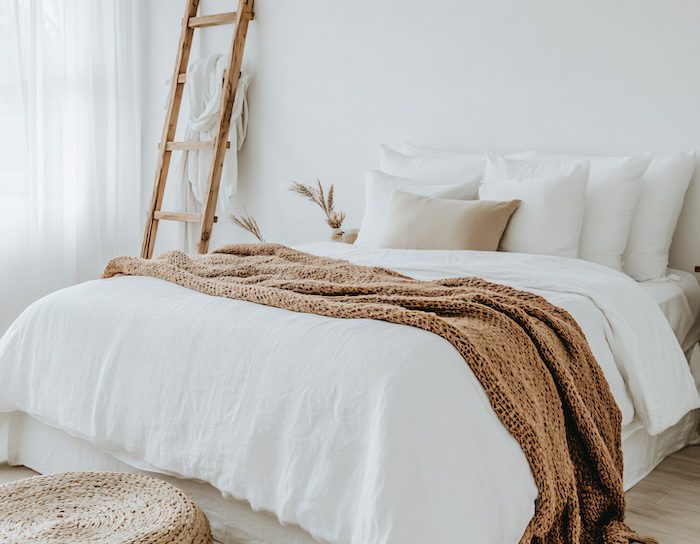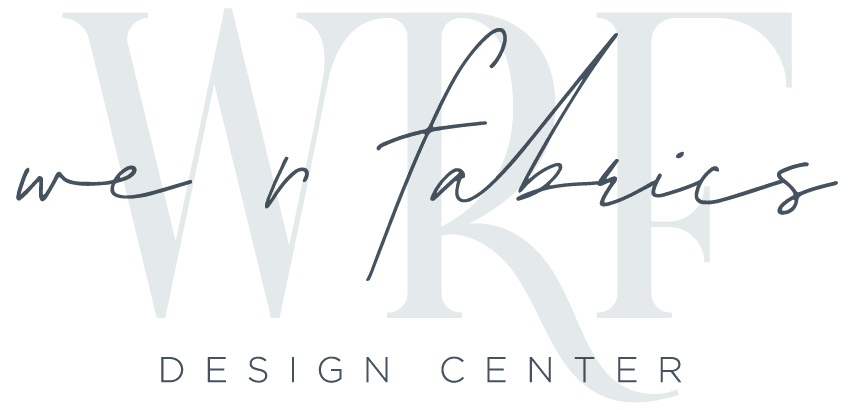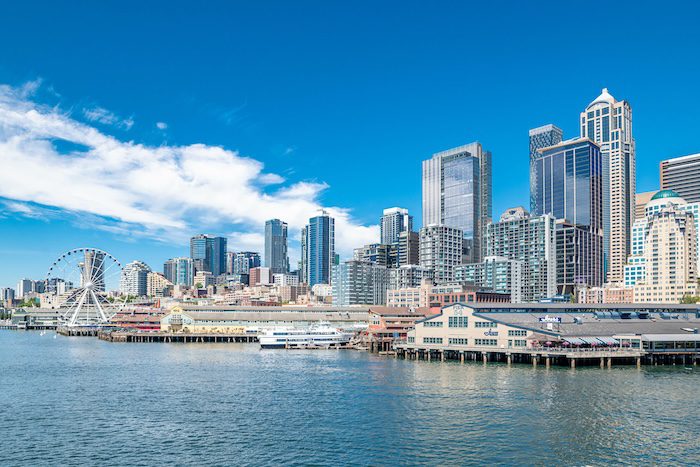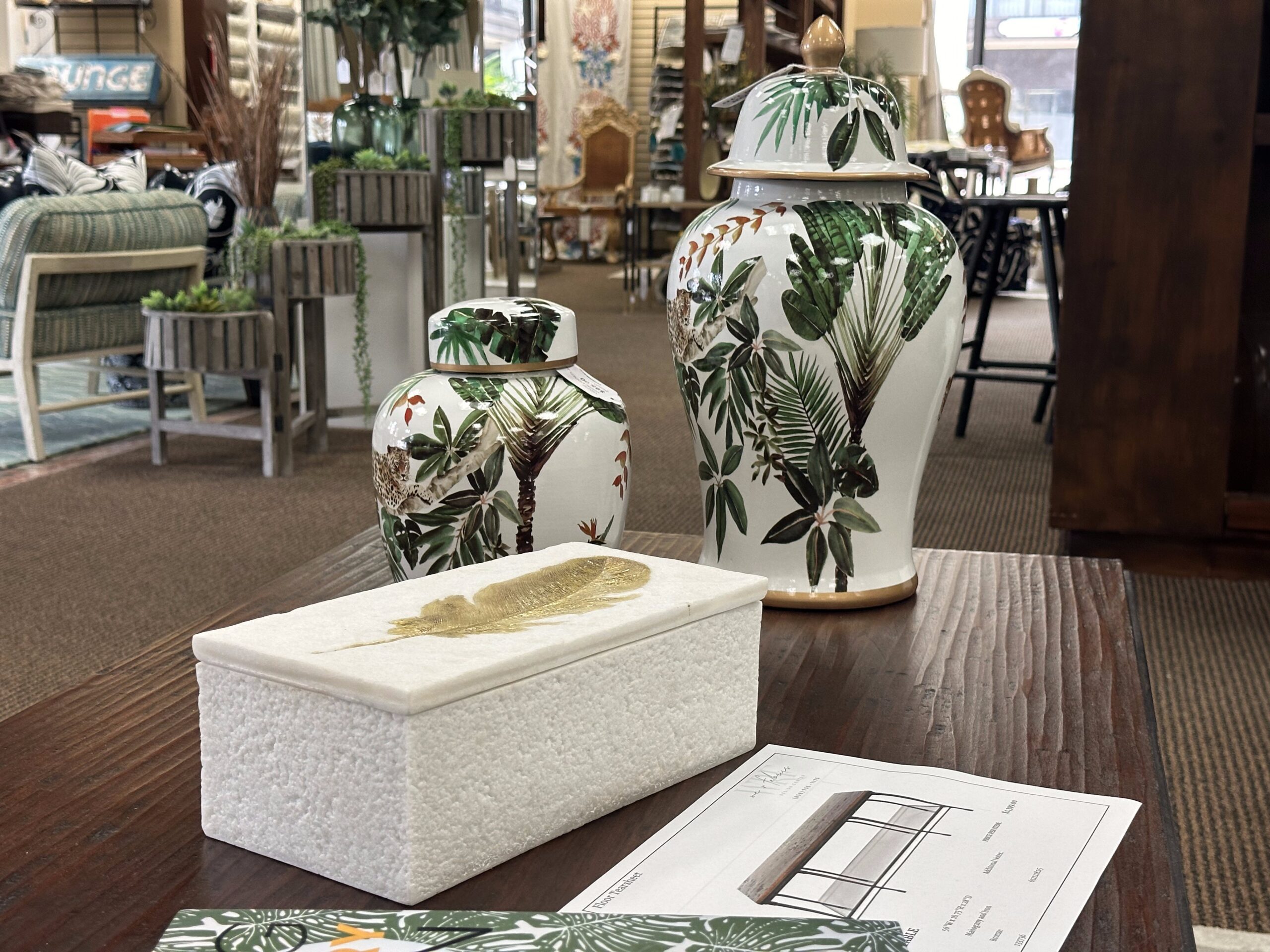When guests arrive at your vacation rental, they form impressions within seconds that directly impact your reviews. While many hosts focus on amenities like a coffee maker or welcome basket, the fabrics throughout your rental space silently communicate quality, cleanliness, and attention to detail. The wrong fabric choices can lead to visible wear, persistent stains, and ultimately, disappointing guest experiences that tank your ratings. Every design decision should be made to earn a five-star review, ensuring that your property stands out for comfort and quality.
Professional short-term rental designers report that fabric-related issues are among the top complaints in negative reviews. Guests notice everything from sagging sofa cushions to pilled bedding, and uncomfortable furniture or poorly maintained pieces can send the wrong message to guests, negatively affecting their perception of your rental. These details make all the difference between repeat bookings and one-star reviews. Smart fabric selection isn’t just about aesthetics—it’s a strategic business decision that affects your bottom line through reduced replacement costs and enhanced guest satisfaction.
In this comprehensive guide, we’ll explore the specific fabric choices that help short-term rentals earn consistently high ratings while minimizing maintenance headaches and replacement expenses.
Why Fabric Choice Makes or Breaks Your Guest Reviews
The fabric selections in your vacation rental directly impact three critical factors: durability, maintenance costs, and guest satisfaction. Unlike traditional homes, short-term rentals experience far higher turnover and usage intensity, which dramatically accelerates wear and increases the likelihood of staining and deterioration. Properties with intentional, guest-focused design—including strategic fabric choices—consistently earn higher ratings and command premium nightly rates. Carefully picking furniture that meets safety and durability standards is equally crucial for short-term rentals, ensuring both guest comfort and long-term property value.
The Hidden Cost of Poor Fabric Choices
When hosts choose standard residential fabrics for their rental properties, they often discover the true cost within the first year. Inferior fabrics show visible wear quickly—sagging cushions, fabric thinning, discoloration, and pilling that guests immediately notice. These issues don’t just affect the visual appeal; they absorb odors and stains that professional cleaners struggle to remove completely.
Many guests expect hotel room quality and cleanliness standards in vacation rentals. When fabrics appear worn or retain odors, guests feel disappointed and express their dissatisfaction through reviews. Research from professional Airbnb hosts indicates that properties with intentional, guest-focused design—including strategic fabric choices—consistently earn higher ratings and command premium nightly rates.
The Financial Impact on Your Business
Beyond guest satisfaction, fabric durability impacts your operational costs significantly. Frequent replacements or deep cleanings for subpar fabrics erode profit margins rapidly. Professional short-term rental design services report typical furnishing investments of $5,000 per room, with high-use areas requiring a larger share allocated to durable textiles.
However, investment in high-quality, tested performance textiles can reduce replacement cycles by years. A $1,500 performance sofa may last 3-5 years in a guest-intensive environment, while a $600 standard fabric option might need replacement annually. When you factor in the lost revenue from negative reviews and reduced bookings, the math strongly favors quality fabric investments.
Performance Fabrics That Handle High Guest Turnover
The hospitality industry has identified specific textile types that consistently perform well under intensive use conditions. These performance fabrics offer the durability and maintenance advantages that make them essential for successful short-term rentals. Choosing the right fabrics is crucial for creating a comfortable and inviting living space that enhances the guest experience.
Crypton Fabrics: The Gold Standard for Stain Resistance
Crypton fabrics feature a proprietary barrier technology that resists stains, moisture, bacteria, and odors while maintaining a soft, natural feel. Initially developed for healthcare and senior living facilities, these fabrics have proven their worth in demanding environments where cleanliness is paramount.
The barrier is engineered into the fabric structure rather than applied as a coating, ensuring long-lasting protection that won’t wash away or wear off. For dining room chairs and living room seating where spills are inevitable, Crypton fabrics provide peace of mind that guests experience comfort without compromising your property’s appearance.
Solution-Dyed Acrylics: Fade-Resistant Workhorses
Solution-dyed acrylics like Sunbrella offer exceptional fade resistance because the color is integrated into the fiber during manufacturing rather than applied afterward. This process creates fabrics that withstand thousands of hours of sunlight exposure with negligible fading, making them perfect for both indoor furniture and outdoor spaces.
These fabrics repel most liquids and can be cleaned with simple soap and water, dramatically reducing maintenance requirements. For properties with natural light exposure or patio furniture that guests use regularly, solution-dyed acrylics provide long-term color stability and easy care.
Microfiber Blends: Budget-Friendly Performance
Microfiber blends, typically made from polyester or polyamide, offer excellent abrasion resistance, soft texture, and budget-friendly pricing. These synthetic fibers resist pilling, hold dye well, and provide the luxurious feel that guests expect without the premium price tag of specialized performance fabrics.
For hosts working with tighter budgets who still want reliable performance, microfiber blends for throw pillows, throw blankets, and accent seating offer an excellent compromise between cost and durability. Microfiber blends can be used to cover all the basics in a rental, from seating to accent pieces, ensuring every essential is both affordable and durable.
Vinyl and Faux Leather: Maintenance-Free Solutions
For dining chairs and high-use seating areas, vinyl and faux leather provide unmatched practicality. These non-porous surfaces block stains entirely and require only simple wiping for cleanup. Modern faux leather options have evolved far beyond the plasticky feel of older versions, now offering sophisticated textures and appearances that guests find appealing.
When multiple guests use dining areas for meals, work, or activities, vinyl and faux leather chairs ensure that spills and stains don’t become permanent problems that affect future guest experiences.
Commercial-Grade Upholstery Options
Understanding commercial upholstery standards helps hosts make informed decisions about fabric investments. Commercial-grade fabrics undergo rigorous testing that provides objective measures of their expected performance in high-use environments. Many commercial-grade fabrics are available in contemporary design styles, allowing hosts to combine durability with modern aesthetics.
Double Rub Testing: The Durability Benchmark
The double rub test (Wyzenbeek method) measures fabric abrasion resistance by rubbing the material with cotton duck until wear becomes visible. For heavy-traffic short-term rentals, fabrics with double rub counts above 50,000 are recommended, which roughly translates to multiple years of intensive use before significant wear appears.
This testing standard removes guesswork from fabric selection and provides hosts with reliable performance expectations. When furnishing living rooms or master bedroom seating areas, prioritizing fabrics that meet or exceed these standards protects your investment and maintains guest satisfaction.
ACT Certification: Comprehensive Performance Standards
The Association for Contract Textiles (ACT) certification indicates that fabrics have passed rigorous testing for fade resistance, abrasion, flammability, and stain repellency. ACT-certified fabrics are designed specifically for commercial applications where durability and safety are paramount.
For hosts serious about long-term performance, ACT certification provides third-party validation that a fabric will withstand the demands of short-term rental use while maintaining its appearance and safety characteristics.
Antimicrobial Treatments and Bleach-Cleanable Options
Post-pandemic awareness has increased demand for antimicrobial fabric treatments that protect against bacteria, odors, mold, and mildew. These treatments are particularly valuable in humid climates or properties with limited ventilation between guest stays. Additionally, antimicrobial and bleach-cleanable fabrics can help prevent issues with bed bugs by allowing for thorough cleaning and easier inspection of bedding.
Bleach-cleanable fabrics, common in commercial whites and light colors, enable hosts to sanitize thoroughly without fabric degradation. This capability is essential for maintaining hygiene standards while preserving the fresh, clean appearance that guests expect in quality accommodations.
 Bedding Fabrics That Survive Frequent Washing
Bedding Fabrics That Survive Frequent Washing
Bedding endures some of the most intensive use in short-term rentals, with laundering after every guest stay. The combination of frequent washing, potential staining, and guest comfort requirements makes bedding fabric selection critical for both operational efficiency and guest satisfaction. Pairing quality bedding fabrics with a sturdy, non-wobbly bed frame is essential to ensure overall comfort and durability for guests.
Percale Cotton: The Hospitality Industry Standard
Percale cotton features a plain weave that outperforms sateen in commercial settings due to its superior resistance to pilling, tearing, and distortion after repeated washing. The tighter weave structure maintains fabric integrity through hundreds of wash cycles while providing the crisp, clean feel that guests associate with quality accommodations.
Professional laundries favor percale for its ability to withstand industrial washing processes without degradation. For hosts managing their own laundry or working with commercial services, percale cotton ensures consistent quality and appearance that supports positive guest experiences. Using pillow covers—especially those with waterproof or hypoallergenic features—further protects pillows, maintains hygiene, and extends the lifespan of bedding in high-turnover rentals.
Bamboo Blends: Natural Performance Benefits
Bamboo-blend sheets offer natural antimicrobial properties, breathability, and moisture-wicking capabilities that enhance guest comfort while reducing maintenance concerns. These fabrics are less likely to develop odors or support bacterial growth, making them ideal for warm climates or properties with limited air conditioning.
The temperature-regulating properties of bamboo blends help ensure that guests feel comfortable regardless of their individual preferences, contributing to better sleep quality and more positive reviews.
Polyester-Cotton Blends: Operational Efficiency
Polyester-cotton blends in a 60/40 ratio provide excellent wrinkle resistance, shape retention, and fade resistance while maintaining much of cotton’s natural softness. The polyester component dramatically reduces the need for ironing or pressing, saving significant time and labor costs in property management.
For hosts managing multiple properties or working with cleaning teams, these blends offer operational advantages that reduce turnaround time between guests while maintaining professional appearance standards.
Thread Count and Weave Considerations
Contrary to marketing claims suggesting higher is always better, optimal sheet durability occurs between 200-400 thread count. Higher thread counts often use thinner, more delicate yarns that deteriorate quickly under commercial washing conditions.
Tighter weaves offer superior stain resistance and durability, as they prevent debris from trapping and minimize snagging. White and light neutral colors remain the preferred choice because they allow for bleach cleaning, maintain a fresh appearance, and simplify replacement matching when needed. Additionally, offering a down comforter as part of your bedding can enhance guest satisfaction by providing exceptional warmth and a luxurious feel, making your accommodations more appealing to those seeking high-quality, cozy options.
Room-Specific Fabric Strategies
Different areas of your rental property have varying performance requirements and guest impact levels. Tailoring fabric choices to each space’s specific demands optimizes both guest satisfaction and operational efficiency. For example, selecting premium fabrics and amenities for the master suite is essential to attract couples and guests seeking a luxury experience.
Living Room Upholstery That Endures
The living room serves as the central gathering space where most guests spend significant time, making fabric durability and appearance crucial for positive experiences. Providing comfortable seating options, such as sturdy chairs and ample seating, is essential for guests who may spend extended time in the living room, whether working remotely or relaxing.
Leather and faux leather sofas represent the gold standard for easy cleanup and timeless appeal, offering non-porous surfaces that resist spills, odors, and stains.
Performance polyester blends provide an excellent alternative, mimicking the look and feel of natural textiles like linen or cotton while delivering superior abrasion ratings, fade resistance, and cleaning ease. These fabrics allow hosts to achieve specific aesthetic goals without sacrificing the performance characteristics essential for short-term rental success.
Color selection significantly impacts maintenance requirements and guest perceptions. Darker colors and patterns better conceal everyday wear, minor stains, and damage compared to light solid colors. This practical consideration helps maintain professional appearance standards between deep cleaning cycles.
Removable, washable cushion covers extend furniture life dramatically by allowing spot cleaning or replacement without furniture disposal. When coffee tables and other surfaces see heavy use, this feature provides crucial flexibility for maintaining guest-ready conditions.
Including a full length mirror in or near the living room can further enhance guest convenience, especially for those preparing for outings.
Curtain and Window Treatment Selections
Window treatments face unique challenges from sunlight exposure, guest handling, and cleaning requirements. Polyester blends dominate hospitality applications because they resist fading from UV exposure, maintain color integrity over time, and withstand repeated washing without shrinkage or distortion. Good lighting, enhanced by the right window treatments, creates a welcoming and safe environment for guests by improving visibility and contributing to a positive overall experience.
Blackout curtains with thermal backing provide dual benefits: enhanced guest comfort through light control and temperature regulation, plus energy savings that reduce operational costs. These features are particularly valuable in master bedrooms and living spaces where guests spend extended time.
Machine-washable options reduce ongoing operational costs significantly compared to delicate fabrics requiring professional cleaning. Silk, linen, and other delicate materials show damage quickly through snags, discoloration, and watermarks, making them impractical for rental property applications.
Dining Room Chair Considerations
Dining areas experience inevitable spills and stains that make fabric selection critical for long-term appearance and functionality. Vinyl and faux leather chairs offer the easiest maintenance through simple wiping, making them ideal for properties that host families or groups who use the dining table extensively. Selecting a durable kitchen table to complement the dining chairs is also important, as it enhances the overall dining experience and withstands frequent use.
When upholstered dining chairs are preferred for aesthetic reasons, performance fabrics with liquid-repelling finishes like Nanotex or Crypton provide essential protection against food and beverage spills. Removable seat cushions with washable covers add another layer of practicality for maintaining pristine appearance.
Traditional fabric dining chairs without performance features should generally be avoided in vacation rentals unless treated with professional fabric protection, as they accumulate stains and odors that degrade the guest experience and require frequent replacement.
Providing bedside tables in bedrooms is equally important for guest convenience and comfort.
Bathroom Textile Selections
Bathroom textiles must balance guest comfort with rapid drying and hygiene requirements. High-quality bath towels in the 500-600 GSM (grams per square meter) range provide optimal absorbency and softness while drying quickly enough to prevent mold and mildew issues. In addition to quality towels, providing basic toiletries such as body wash and toilet paper is essential to meet guest expectations and create a hotel-like experience.
White towels remain the hospitality standard because they allow for bleach cleaning to remove makeup stains and achieve true sanitation between guests. Matching replacements are readily available, simplifying inventory management for hosts operating multiple properties.
Microfiber bath mats outperform cotton alternatives through faster drying, superior mold resistance, and high absorbency. These characteristics are particularly valuable in humid climates or bathrooms with limited ventilation, where traditional materials struggle to maintain freshness.
Outdoor and Patio Fabric Solutions
Outdoor spaces are a major draw for vacation rentals, and the right fabric choices can elevate the guest experience from the moment guests arrive. Airbnb hosts know that patio furniture isn’t just about looks—it’s about creating inviting, functional areas where guests can relax, dine, or socialize. Selecting durable, weather-resistant fabrics for outdoor spaces is a must-have for any host aiming for five-star reviews.
Weather-Resistant Upholstery for Patios and Balconies
In vacation rentals, guests expect patio furniture that’s both comfortable and resilient. Weather-resistant upholstery is essential for withstanding sun, rain, and fluctuating temperatures. Look for fabrics treated with waterproof and UV-resistant coatings to prevent fading and deterioration, ensuring your outdoor spaces remain vibrant and welcoming season after season. A great idea is to opt for materials that mimic the natural look of wicker or rattan, which not only hold up well outdoors but also help create a cozy atmosphere that encourages guests to linger. Investing in these must have fabrics means less time spent on maintenance and more time enjoying positive guest feedback.
Quick-Dry and Mold-Resistant Options
Humidity and unexpected rain showers are common challenges for vacation rentals with outdoor spaces. That’s why quick-dry and mold-resistant fabrics are essential for patio furniture. These advanced textiles prevent the growth of mold and mildew, keeping cushions and seating fresh and hygienic for every guest. Many guests notice and appreciate when outdoor furniture dries quickly after a rain, allowing them to make the most of the space without worry. Fabrics infused with mold-resistant treatments—such as those containing silver or copper—offer an extra layer of protection, ensuring your outdoor areas remain clean and inviting for all the guests who pass through your property.
Coordinating Outdoor and Indoor Aesthetics
A seamless transition between indoor and outdoor spaces can make all the difference in how guests experience your vacation rental. Coordinating fabric choices—such as matching throw pillows or blankets—helps create a unified, welcoming look that feels intentional and high-end. Using a neutral color palette outdoors not only complements most interior designs but also provides a timeless backdrop for pops of color from accessories like planters or vases. This attention to detail in your outdoor spaces signals to guests that you care about their comfort and the overall guest experience, setting your property apart from so many Airbnbs that overlook these finishing touches.
Sustainable Fabric Choices for Eco-Conscious Rentals
Sustainability is no longer just a trend—it’s a key expectation for many guests booking vacation rentals. Airbnb hosts who prioritize eco-friendly fabric choices not only reduce their environmental impact but also appeal to a growing segment of travelers seeking responsible accommodations. Making thoughtful, sustainable choices in your rental’s fabrics can enhance your property’s appeal and contribute to a positive guest experience.
Organic and Recycled Materials
Choosing organic and recycled materials is a smart move for eco-conscious vacation rentals. Fabrics made from natural fibers like organic cotton, hemp, or bamboo are biodegradable and typically require less water and fewer pesticides to produce, making them a responsible choice for both the environment and your guests. Recycled materials, such as polyester or nylon made from post-consumer waste, help reduce landfill contributions and minimize the carbon footprint of your rental’s furnishings. Many guests appreciate when hosts go the extra mile to create a sustainable environment, and highlighting these choices can be a major selling point in your listing. For added peace of mind, look for fabrics certified by organizations like GOTS or Oeko-Tex, which ensure that materials meet strict environmental and social standards. By integrating these sustainable options, Airbnb hosts can demonstrate their commitment to both guest comfort and the planet—an approach that resonates with today’s eco-minded travelers.
Budget-Friendly Fabric Strategies
Successful short-term rental fabric selection requires strategic allocation of resources to maximize both guest satisfaction and long-term profitability. Understanding where to invest in premium materials versus where to use budget options helps hosts optimize their return on investment. Managing frequent replacements and maintenance for low-quality fabrics can be time consuming, making strategic investment in the right materials even more important.
Strategic Investment Priorities
High-traffic, guest-impact zones deserve premium fabric investments because they directly influence comfort, reviews, and operational costs. Main seating upholstery, quality bedding, and mattress protectors should receive priority in budget allocation because they face intensive use and significantly impact guest experiences.
The cost-benefit analysis strongly favors investing in performance fabrics for sofas, dining chairs, and bed linens where guest contact is frequent and replacement costs are substantial. A performance sofa that lasts five years versus a budget option requiring annual replacement provides clear financial advantages beyond guest satisfaction benefits.
Cost-Saving Opportunities
Decorative elements like throw pillows, wall art accents, and occasional seating offer opportunities for budget-friendly fabric choices without compromising core functionality. These items can be easily and inexpensively replaced when worn, allowing hosts to update style preferences without major investments.
Bulk purchasing and commercial or outlet sources can significantly reduce per-yard costs for performance fabrics. Many professional designers pass trade discounts to clients, resulting in savings of 30-50% on quality materials that would otherwise strain renovation budgets.
When to Splurge vs. Save
Splurge decisions should focus on items that directly impact guest comfort and property longevity. Mattress and pillow protectors, for example, can extend bedding life by 200-300% through reduced staining and wear, making their higher initial cost insignificant compared to replacement savings.
Save on easily replaceable items that don’t face intensive use or guest contact. Decorative throw blankets, accent pieces, and low-use furniture can utilize budget materials without affecting core guest experiences or operational efficiency.
The key principle involves balancing initial investment with long-term maintenance and replacement costs. A $1,500 performance sectional may represent better value than a $600 standard option when replacement frequency, cleaning costs, and guest satisfaction impacts are considered comprehensively.
Maintenance and Care for Longevity
Even the highest-quality performance fabrics require proper care to achieve their full lifespan potential. Implementing systematic maintenance protocols protects fabric investments while ensuring consistent guest experiences. As part of regular maintenance routines, hosts should also check that essential safety gear—such as fire extinguishers, smoke detectors, first-aid kits, slip-resistant mats, and emergency contact information—is in place and in good condition to ensure guest safety and regulatory compliance.
Providing a white noise machine in bedrooms can further enhance guest comfort and satisfaction by helping block out disruptive sounds and promoting restful sleep.
Professional Care Protocols
Clear care instruction cards for cleaning teams standardize stain treatment and maintenance protocols, preserving fabric condition over time. Professional cleaners need specific guidance about approved cleaning products and methods to avoid inadvertent damage that voids fabric warranties or reduces performance.
Regular deep cleaning every 6-12 months, depending on usage intensity, prevents deeply embedded dirt and oils that degrade fabric appearance and performance. Steam cleaning upholstery and laundering removable cushion covers maintains the fresh, clean appearance that guests expect from quality accommodations.
Immediate Response Strategies
Immediate stain treatment remains critical even for performance fabrics, as set-in stains can permanently damage any material if left unattended. Having basic first aid kit-style stain removal supplies readily available for cleaning teams enables quick response that prevents minor incidents from becoming major problems.
Training cleaning staff to recognize different stain types and appropriate treatment methods protects fabric investments while maintaining consistent appearance standards. Simple protocols for common issues like wine, coffee, or food spills can prevent permanent damage that requires premature replacement.
Systematic Rotation and Care
Cushion and pillow rotation ensures uniform wear patterns, preventing flattening or fabric thinning in high-contact areas. This simple maintenance step can add years to upholstery life while maintaining even appearance that guests notice and appreciate.
For properties with outdoor spaces, bringing cushions and throw pillows indoors during extreme weather protects fabrics from unnecessary UV and moisture exposure that accelerates deterioration even in performance materials. Ceiling fans are also valuable for maintaining a comfortable environment and can help reduce fabric wear caused by excessive heat or humidity.
Creating a Five-Star Experience Through Fabric Excellence
The fabric choices throughout your short-term rental create subliminal impressions that influence every aspect of the guest experience. When guests notice quality materials that feel fresh, look pristine, and provide genuine comfort, they naturally associate these positive impressions with your property’s overall value and care standards.
Successful Airbnb hosts understand that fabric selection represents an investment in guest satisfaction that pays dividends through higher ratings, increased booking rates, and the ability to command premium nightly rates. Properties that consistently earn five-star reviews share common characteristics: attention to guest comfort details, materials that maintain their appearance over time, and environments that feel both luxurious and clean. Thoughtful amenities such as reliable Wi-Fi, a French press, mini fridge, dish soap, paper towels, cutting board, and smart locks can help you exceed Airbnb guests’ expectations and create a memorable stay.
The most effective approach involves systematic evaluation of your current fabrics against performance standards, prioritizing replacements based on guest impact and wear patterns. Start with the most visible, heavily-used pieces in common areas and bedrooms, then work systematically through lower-priority items as budget allows. Providing for more guests, supporting other devices on the Wi-Fi network, and offering a welcome snack can further enhance the guest experience and help your property stand out among hotel rooms and vacation rentals.
Remember that many guests, especially remote workers who may spend extended time in your space, notice details that affect their comfort and productivity. Quality fabrics contribute to the inviting atmosphere that encourages repeat bookings and positive word-of-mouth recommendations that drive organic growth for your rental business.
By implementing the fabric selection strategies outlined in this guide, you’ll create a rental space that not only withstands the demands of high guest turnover but actually enhances guest satisfaction through superior comfort and appearance. The initial investment in quality, performance fabrics pays long-term dividends through reduced replacement costs, easier maintenance, and the type of consistently positive reviews that distinguish top-performing properties in competitive markets.
Start by assessing your highest-impact pieces—your main sofa, dining chairs, and master bedroom bedding—and upgrade these foundational elements with performance fabrics that match your style preferences while delivering the durability your business demands. Your future guests, your reviews, and your bottom line will all benefit from these strategic fabric investments.
Frequently Asked Questions (FAQs)
Q1: What are the best fabrics for Airbnb or short-term rental sofas?
A: The best fabrics for rental property sofas are performance textiles like Crypton, Sunbrella, microfiber blends, and commercial-grade polyester. These fabrics resist stains, odors, and wear while offering easy maintenance and lasting comfort, especially in high-traffic areas.
Q2: How often should I replace fabric furniture in my rental?
A: With high-quality performance fabrics, you can expect sofas and chairs to last 3–5 years in a high-use vacation rental. Low-grade fabrics may need replacing annually due to sagging, stains, or wear. Investing in durable textiles helps extend replacement cycles significantly.
Q3: Are there specific fabric certifications I should look for?
A: Yes. Look for ACT certification for commercial performance standards and fabrics rated with 50,000+ double rubs for durability. These certifications help ensure the material withstands heavy guest use without compromising appearance.
Q4: What’s the most durable bedding fabric for vacation rentals?
A: Percale cotton (200–400 thread count) is a hospitality favorite for its resistance to pilling and tearing after frequent laundering. Poly-cotton blends also offer excellent durability and wrinkle resistance, reducing turnover time between guests.
Q5: How can I prevent stains and odors in fabric upholstery?
A: Choose fabrics with built-in moisture and odor barriers like Crypton, and treat upholstery with antimicrobial finishes. Use removable, washable cushion covers, and have a cleaning protocol in place for immediate stain treatment between stays.
Q6: What fabrics are best for outdoor furniture in rentals?
A: Use solution-dyed acrylics (e.g., Sunbrella), quick-dry foam inserts, and mold-resistant fabric blends for patio furniture. These materials resist UV damage, dry quickly after rain, and stand up to seasonal weather conditions without fading or degrading.
Q7: Can I use regular home fabrics in my rental if I’m on a budget?
A: While tempting, standard residential fabrics wear out quickly in rentals. For budget-conscious hosts, microfiber blends and faux leather offer cost-effective durability. Prioritize performance textiles in high-use zones, and use lower-cost fabrics only for accents.
Designed for Five-Star Living. Curated by WRF Design Center in Solana Beach. Explore our design services



 Pursu Agency
Pursu Agency